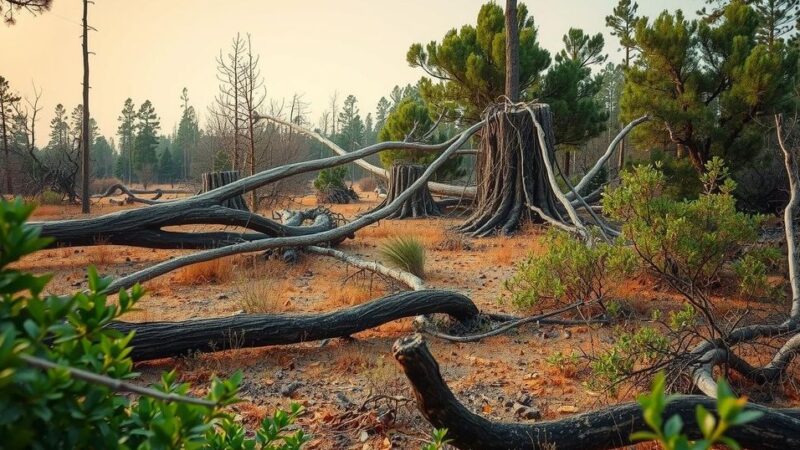The Volcán de Fuego in Guatemala has erupted, discharging an ash cloud reaching seven kilometers high. Approximately 30,000 residents in three districts have been ordered to evacuate due to danger. Hot gas and ash flows threaten local communities, leading to school cancellations and emergency responses from authorities.
The Volcán de Fuego, known as the Fire Volcano, has erupted in Guatemala, sending a plume of ash and gas soaring up to seven kilometers into the atmosphere. This explosive activity poses a significant threat to surrounding communities, prompting authorities to order evacuations for approximately 30,000 residents across three districts. The National Institute of Seismology, Volcanology, Meteorology and Hydrology has confirmed the eruption.
Hot streams of gas, ash, and rocks have rapidly flowed down the slopes of this 3,763-meter-high volcano. In response to the intensifying eruption, a state of orange alert has been declared by local authorities. The Volcán de Fuego is one of the most active volcanoes in Central America, situated approximately 35 kilometers from Guatemala City.
Claudinne Ogaldes, a spokesperson from the national disaster control authority Conred, indicated the seriousness of the situation, stating that those in the affected areas are in imminent danger. Evacuations have begun, with hundreds already relocated to safety, and schools in several communities have suspended classes due to ash fallout.
The eruption of the Volcán de Fuego in Guatemala has necessitated urgent safety measures, with thousands of residents evacuated from their homes amid significant volcanic activity. This volatile volcano continues to pose a serious risk, accentuating the need for preparedness in regions prone to seismic events. Historical eruptions highlight the potential dangers of this natural phenomenon, prompting ongoing monitoring and community awareness.
Original Source: www.bluewin.ch






